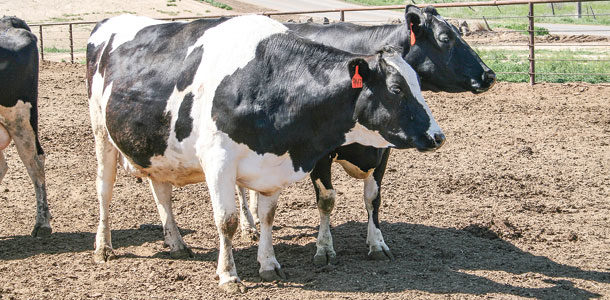Traditionally, 60-day dry cow programs have been considered optimal for dry cow management to maximize milk production in the next lactation. Feeding both far-off and close-up rations also allows producers to control feed costs by feeding higher-quality forages and additives, such as anionic salts, for only three weeks prepartum.
Research shows that feeding a negative dietary cation-anion difference (DCAD) nutrition program for a minimum of 21 days prior to calving may result in fewer early postpartum health disorders, increased milk yield and better reproductive performance through improved calcium metabolism.
This traditional approach can be difficult to manage under a variety of conditions regardless of herd size, including:
- Overcrowded close-up facilities
- Multiple pen moves resulting in social stress and decreased feed intake
- Inadequate TMR load size resulting in poor mixing and increased sorting
- More labor required to feed multiple diets and move cows
- Less than five weeks for diet adaptation when forage sources are inconsistent
Shortening the dry period
High-producing cows maintain greater milk persistency through later lactation and therefore are more difficult to dry-off at 60 days prior to expected calving date. Research demonstrates that a 60-day dry period is not required for maximum milk production the following lactation; however, milk production can be reduced with dry periods less than 30 days.
Dry periods below 30 days are not recommended. The potential sweet spot may be found in a 40- to 45-day dry period, allowing producers to benefit from an additional 15 to 20 days of milk income and ensuring cows that calve early receive the proper nutrition prior to calving.
A shortened dry period with one diet also addresses the challenges often associated with proper management of close-up groups, offering greater flexibility for housing considerations to reduce overcrowding, separate first-lactation animals and minimize pen moves. Labor needs may also be reduced using this approach.
A single-group dry cow diet creates additional benefits including increased TMR load sizes, improved delivery and less feed sorting at the bunk. In addition, for herds that use a properly sized mixer for dry cows, a single-group diet may allow for twice-daily feeding and more consistent feed availability in the bunk.
Feed inventory control can be improved by reducing the number of feedstuffs required for dry cows. Finally, extended time for rumen adaptation may improve dry matter intake prior to calving. Despite these advantages, the safety of feeding anionic salts for extended periods has remained unclear until recently.
Safety of negative DCAD diets
Subclinical hypocalcemia costs as much as $125 per cow in lost milk production and higher incidences of transition cow disorders, including displaced abomasums, ketosis and metritis.
Herd prevalence of subclinical hypocalcemia is estimated to be at least 50 percent, or six times greater than clinical milk fever. A proven strategy to help reduce the incidence of clinical and subclinical hypocalcemia is to employ a strategy of feeding a negative DCAD diet prepartum.
Recent research from the University of Georgia demonstrates that negative DCAD diets can be fed safely and profitably for more than 40 days. In that study, cows were fed a negative DCAD diet for three, four or six weeks prepartum.
Results of the study found no differences in prepartum dry matter intake, serum calcium concentrations at calving, postpartum dry matter intake, fresh cow health, milk yield and milk components.
Take-home message
Negative DCAD diets are proven to improve calcium status through both enhanced dietary calcium absorption and bone calcium release. Shorter, single-group dry cow programs offer an additional management strategy to simplify and improve transition cow health and performance.
Combining these strategies may provide a greater return on investment for transition cow programs. It is important to evaluate these opportunities on a herd-by-herd basis to determine whether a shortened, single-group dry cow program is appropriate for each herd. PD
References omitted due to spacebut are available upon request. Click here to email an editor.
PHOTO
Shorter, single-group dry cow programs offer an additional management strategy to simplify and improve transition cow health and performance. Photo byPDstaff.

Jennifer Lanier
Dairy Technology Manager
Phibro Animal Health Corporation







